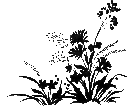 |
The Preserve |
News and Events |
Natural History |
The Trail |
Monitoring |
Restoration |
Library |
Organization |
|
Todmorden Mills Wildflower Preserve
|
Nature NotesYour Nature Guide for the week of September 20-September 26WildflowersWalking south past the pond, the trail is flanked by stands of a tall yellow sunflower known as Jerusalem Artichoke, which is just starting to flower. The tubers were eaten by aboriginal peoples and, hence, the alternative name, Indian Potato. In swampy areas beside the trail Spotted Jewelweed continues to flower. Lightly brush one of the fat, pendulous fruit capsules and watch it eject its seeds instantaneously, propelling them some distance from the plant. Examine the remnants of the capsule and you will see the dispersal mechanism: a coiled strand which acts like a spring. Now you can appreciate why Jewelweed is in the Touch-Me-Not family. InsectsAlong the woodland trail, check the underside of Goldenrod or Jerusalem Artichoke leaves. Clustered along the mid-veins, you will find colonies of adult and immature sap-sucking insects called Treehoppers. These bugs use their "beak" to pierce the veins of leaves and extract sap. The adult treehoppers are brown in colour with a distinctive "humpbacked" appearance. Females protect their eggs from parasitism by covering them with their bodies. After the eggs have hatched, the adults remain with the nymphs, which are smaller than adults and have shiny black bristly bodies. You will also observe European Fire Ants on the underside of the leaves in the treehopper colonies. Fire ants tend the nymphs by stroking and nudging them. Tending seems to encourage nymph feeding activity, and the ants' "reward" is a harvest of dilute plant sap excreted by the nymphs, called honeydew. Experiments have shown that the ants protect the nymphs from small predators and they also deter leaf herbivores that would otherwise strip the host plants of leaves. This aspect of tending by ants probably helps to improve nymph survival. Trees, Shrubs and VinesStaghorn Sumac and Virginia Creeper are among the first woody plants to turn colour in early fall. Leaves of introduced Norway Maples are becoming paler green, and many of them are marked with black blotches, characteristic of Tar Spot. This fungus infects maples, and Norway Maples are particularly susceptible. Although the fungus does not seem to affect the overall health of the trees, it does impart a rather unsightly appearance. White Ash seeds have ripened and are beginning to fall. The seeds are elongated and have one "wing", in contrast with Manitoba Maple, whose keys have two wings. Ash are hardy trees which tolerate a range of soil and moisture conditions. In Toronto, Green Ash has been planted extensively as a street tree for this reason. BirdsIn the meadow, watch for American Goldfinch families perched high on the seedheads of Cup Plant. Songbird migration continues and fall warblers especially favour the Crack Willows. Nature Notes is researched and written by Mike Dennison and Alejandro Lynch, and is published each week by Hopscotch Interactive (www.hopscotch.ca). In addition to this online version, Nature Notes is available as a print-friendly PDF and as a text-only email version. Please contact Mike Dennison to receive these, or for more info (tel: 416-696-7230, email: dennison@hopscotch.ca). |
| Copyright © 2003-2004 Todmorden Mills Wildflower Preserve |